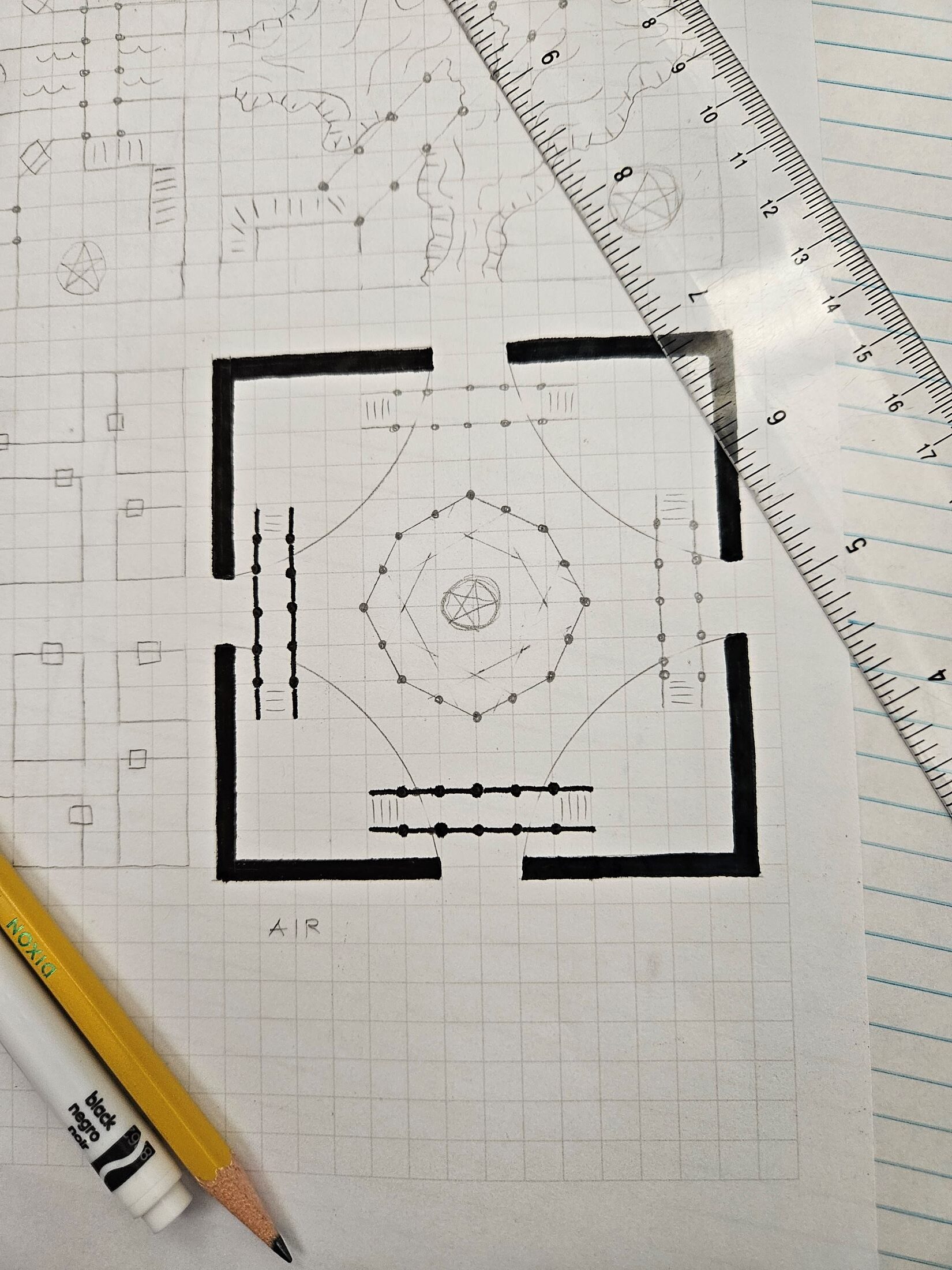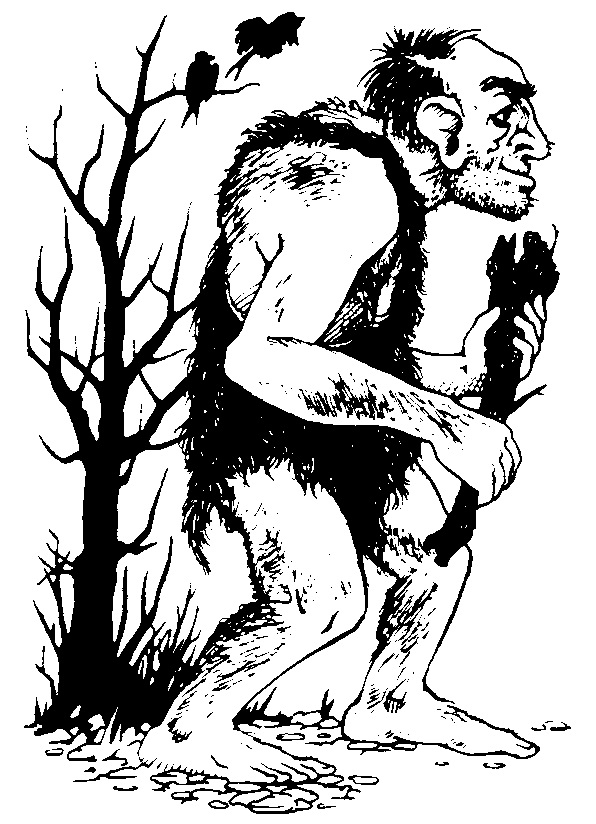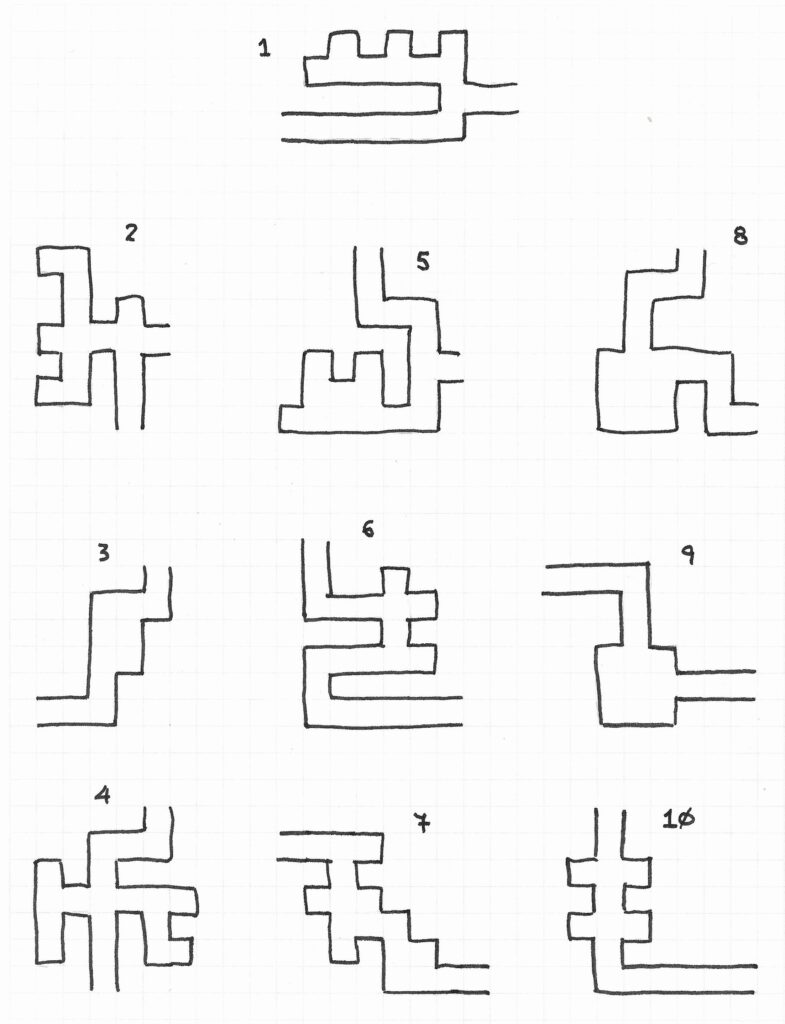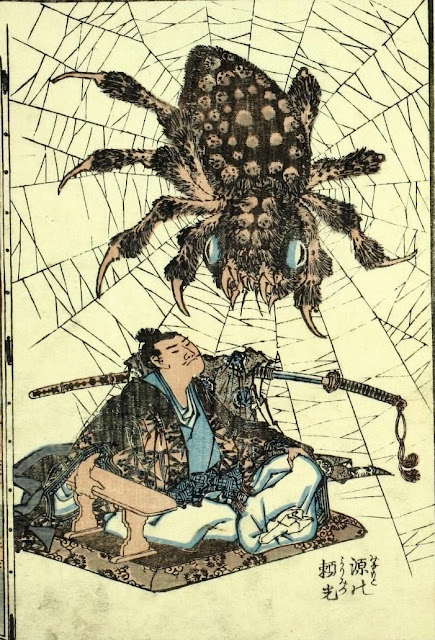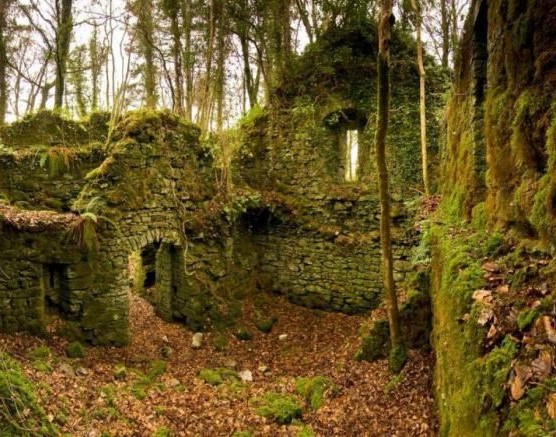Bosukumo is not an average goblin-spider. It has 6.5 hit points per HD (26 hit points), and it enjoys a +2 bonus on saving throws against magical effects that affect the mind or emotions. Bosukumo’s gaze poses a threat. Once per day each, Bosukumo can inflict charm monster or hold monster on a human, demi-humanoid, humanoid, or giant that meets its gaze. This ability works in any of Bosukumo’s forms. Because of these additional abilities, Bosukumo is worth 294 XP. What’s more, Bosukumo’s treasure type is 4 (Hoard).
In other respects, Bosukumo is a typical goblin-spider, the stats of which follow.
Goblin-Spider
Number: 1-2, 2-5
Size: Small to Medium
HD: 4 (d8)
AC: 14 or 15
Move: 30 ft., 20 ft. (climb)
Attacks: Bite (1d3 or 1d8) or by weapon
Special: Darkvision 90 ft., Poison, Shapeshift, Twilight Vision, Web
Saves: M, P
INT: High
Alignment: Neutral Evil
Type: Shapechanger
Treasure: 4
XP: 130+4
The goblin-spider is a yokai, a type of supernatural creature that most often has an evil disposition. In its natural form, the goblin-spider appears much like a man-sized spider, but its eyes are those of a mammal rather than an arachnid. The goblin-spider is a shapeshifter as well. Intelligent, malicious, and aggressive, the goblin-spider poses a serious risk to the humans and demi-humans upon which it prefers to prey.
Poison: A victim bitten by a goblin-spider must make a constitution save to prevent the immediate affects of the venom taking place. A successful save halves the poison’s initial effects and negates the second round’s effects.
A goblin-spider’s poison on the first round causes 1d10 points of damage. On the second round, it causes a further 1d8 points of damage plus paralyzation for 3d6 hours.
Shapeshifting: During the day, a goblin-spider is about the size of a goblin, and it cannot use its shapeshifting ability. When in small form, it is AC 14 and its bite inflicts 1d3 points of damage. Once the sun sets, a goblin-spider grows to size medium, and it can shapeshift into any small or medium animal, human, demi-human, or humanoid.
In animal form, it gains the appropriate movement, AC, and attacks. If that form has a bite attack, the goblin-spider’s bite remains poisonous. In human, demi-human, or humanoid form, the goblin-spider loses its poisonous bite, but it can wield weapons, wear armor, et cetera.
A goblin-spider speaks the language of arachnids and the Common Tongue regardless of form. In animal form, it speaks with animals at will. In human, demi-human, or humanoid form, it speaks the appropriate racial language.
Web: In either small or medium goblin-spider form, this monster spins webs. A single strand of its silk is strong enough to support the goblin-spider and one creature four times as large. Eight times per day, a goblin spider can throw a web (as the wizard spell). To protect its lair, a goblin-spider creates sheets of sticky webbing from 5 to 60 feet square. It usually positions these sheets to snare flying creatures as well as to trap prey on the ground. A goblin-spider can move across its own web at its climb speed and can pinpoint the location of any creature touching its web.
Tags: C&C, Friday Foe, Goblin Spider Lair
